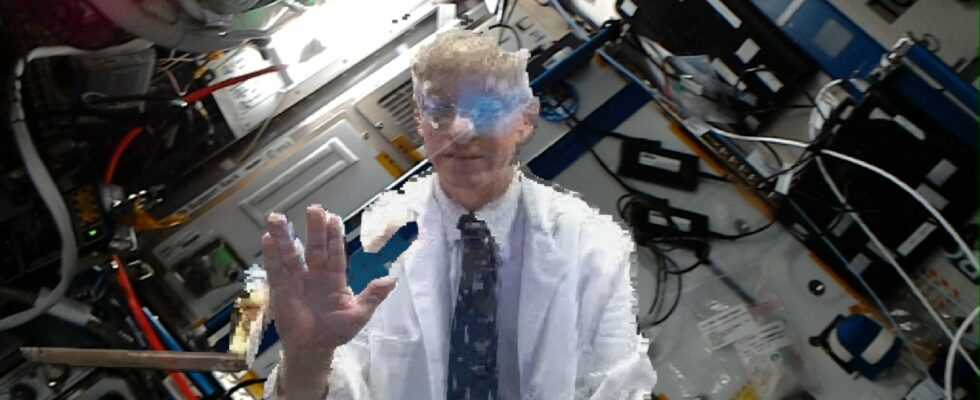At the end of 2021, NASA projected a hologram on board the international space station. Astronaut Thomas Pesquet was able to have a discussion with doctors on Earth, as if they were in the same physical space.
We believe in star trek : in October 2021, Dr. Josef Schmid and his team were “ holocarried aboard the International Space Station. The use of 3D holograms projected from Earth into space is a first, which NASA debriefed a few months later in a post posted online in April 2022.
It was more particularly a medical teleconsultation, for an astronaut who is well known in France: Thomas Pesquet. French “ had a two-way conversation with the holographic images of the doctors. The latter were virtually present in front of the astronaut.
From a technological point of view, the space agency mobilized a Microsoft Kinect Hololens camera and a computer equipped with software developed by AEXA Aerospace. On Earth, the medical team was scanned: high-definition 3D models were built and digitally compressed, then transmitted and reconstructed, all in real time. On the ISS, Thomas Pesquet was equipped with the HoloLens, glasses that project holographic images in front of the user.
The difference with communication by interposed screens is the feeling of being in the same physical space. Thomas Pesquet and the doctors were able to shake hands virtually: “ It was the first holo-handshake between Earth and space. »
“A new form of communication”
We are still very far from star trek and its holodeck — the video definition wasn’t great and the body images were sometimes incomplete. And 3D holograms aren’t new, although none have been projected into space yet. But NASA presents this as a demonstration of a ” new form of communication “. This teleconsultation therefore serves as a precursor for more extensive use during future missions.
” We will use it for our private medical conferences, private psychiatric conferences, private family conferences and to bring VIPs to the space station to visit the astronauts “says Josef Schmid on the NASA website. This type of technology could find use in future long missions, to Mars in particular, where astronauts risk being isolated for many months with an extended communication delay. Holograms could maintain a stronger human bond.
The agency intends to associate holographic images with augmented reality, which would therefore make it possible to add virtual objects during the sessions. But NASA also has ambitions to add haptic feedback, i.e. a sense of touch and proprioception – which would translate into gloves that can sense objects and their position.
“You could work together on the device”
dr josef schmid / nasa
” Imagine being able to bring the best instructor or the real designer of a particularly complex technology right next to you, wherever you are working. (…) You could work together on the device, a bit like two of the best surgeons working during an operation “explains Schmid.
NASA concludes on a potential ground utility – to communicate with teams located in extreme environments such as in Antarctica, for example, “ this type of technology can help people in these situations communicate, bringing people together, regardless of distance or environmental challenges “, Estimates the space agency.

